It’s been too long since I put up a new post. Thing is, I’ve been busy writing. So today I’ll take a chunk of my writing notes and make them into a perhaps-a-bit-opaque post.
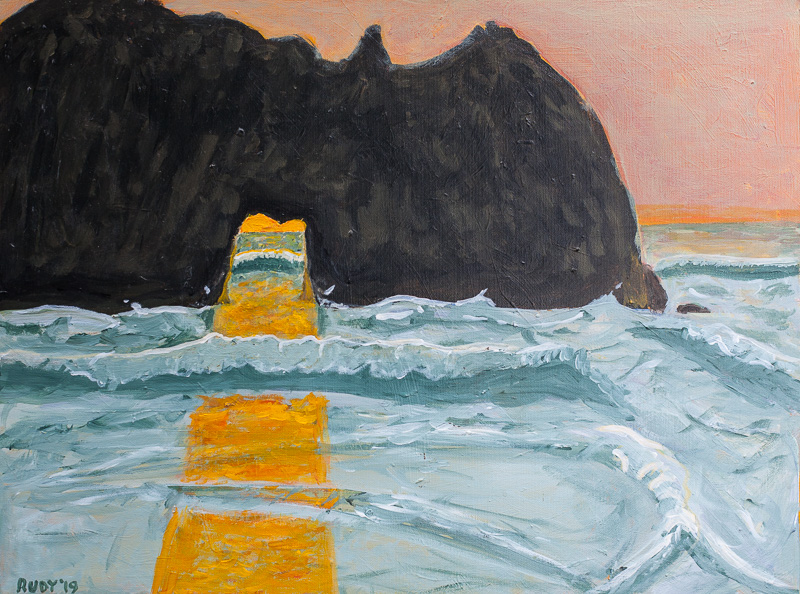
“Magic Door” acrylic on canvas, December, 2019, 24” x 18”. Click for a larger version of the painting.
I’ve been writing a series of stories that all have to do with telepathy and with the old notion of achieving immortality by uploading your personality into the cloud—and then by having your software run some kind of new body. I first started writing about this theme in 1980, forty years ago, when I wrote my novel Software, the first in my Ware Tetralogy.
The first of my recent series of stories is called “Juicy Ghost,” and it appeared in the ezine Big Echo. It’s somewhat radical. It can also be found in the online version of my Complete Stories.
The follow-up stories “Everything Is Everything” and “The Mean Carrot” are finished, but they have yet to appear. And I’m currently working on a long story called “Mary Mary.”
The intended final architecture in the stories is this.
* A psidot is a smart phone that transmits telepathically.
* You use a psidot to store your personality in a software construct called a lifebox , which is to be hosted on a server of some kind.
* Your lifebox avatar doesn’t become fully alive, or what I call juicy, unless it is linked to a peripheral body that it controls.
* To link with a body, your lifebox communicates via a psidot that sits on the body, getting input from the host body, and controlling its moves.

Key issue: who owns your lifebox’s server?
In “Mary Mary” the main lifebox server is owned by Skyhive. Like the Google data-centers, the Skyhive servers generate an overarching cloud. They charge rental for storing your lifebox. If you, or your estate, can’t pay, they put your lifebox into service as a gig worker. Your lifebox might be doing computational tasks in the cloud, or it might be running biobots in the real world, such as flying messenger biodrones.
I’ve got a rebel-type hacker character in “Mary Mary” who’s named Gee Willikers. He uses an indie server to store lifeboxes in such a way that they’re not basically the slaves of large corporations.
This raises a couple of implementation questions…and here we get into an infodump of yesterdays writing notes.
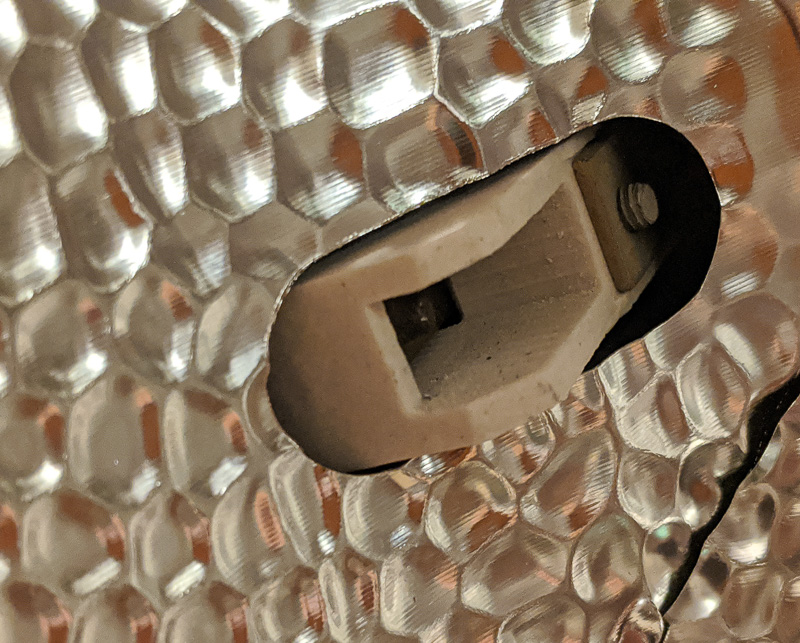
First, what is Skyhive is using for servers? As I say, I’d been instinctively thinking of Google data centers, buildings with stacks and stacks of machines that are chips in a box. But this is kind of retro. Everything else in my story is biotech and biobot and post-silicon. So the servers really ought to be biocomputational.
Second, what does Gee Willikers use for servers? It should be slightly cooler than what Skyhive uses.
In answering these two questions, let’s catalog a few of the possible server options. And the first, more thoroughly described option is the one that I plan to adopt.

“Manhattan” oil on canvas, June, 2018, 30” x 24”. Click for a larger version of the painting.
(1) Biocomputation
Have your lifebox server be some kind of biocomputer. This is the path I’m going to take.
Problem: this seems to undermine my current projected juicy ghost architecture which says: Lifebox software lives on dead server, and gains soul by using a teep psidot to connect to a living body. I’ve had this architecture in mind for over a year, and I used it when I wrote the kick-off “Juicy Ghost” story, and I won’t give it up.

[Chuck Shotton’s 3D printed models of critters from my novel Million Mile Road Trip.]
But if the server is already alive, seems like you don’t need to hook into a live body to get soul. You’d be able to get your juice from the live biocomputing server itself. So then all the lifeboxes would automatically be juicy. And there’s no story left at all. Ouch. Can’t have this. What do I do?
I’ll say the bio computers are programmed in a boring Von Neumann architecture-type way, like with this imaginary LISP-like language that I call Spork, and they don’t have soul. There’s differences in the quality of “soul” you might get from different bio organisms. Skyhive uses stupid mats of yeast for its servers. No action in there, no juice.
And Gee is subject to this ex-post-facto constraints as well. Okay, his server will be slightly more interesting than yeast mats. Like a redwood tree. Or a smelly bucket of piss (with lots of microorganisms in it). But for my story to work, even Gee’s server biocomputers have to lack the requisite high-weirdness biocrunch to foster juiciness. Both Skynet’s and Gee’s lifeboxes need the psidot/live-host connection.
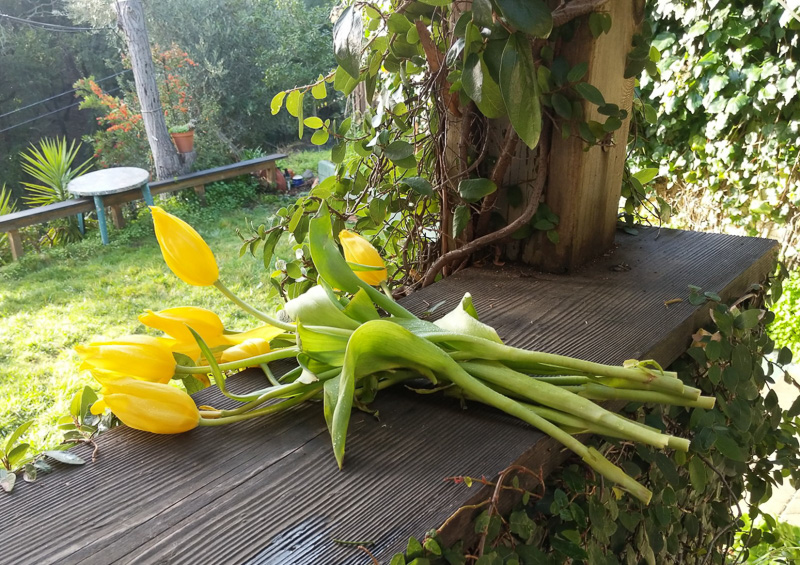
Absolute law: to get juicy, a lifebox has to do teep (that is, telepathy) with a living animal body via psidot. You don’t get that juicy bio soul until you’re hooked into a real animal or insect body. Why is this? Wal, you glom onto those way-sick natural computations in a holistic body, with its mitochondria and ribosomes and quantum entanglement and all that fine shit.

(As an aside, even if your lifebox was alive and juicy on the server, you would still need the body so you have a peripheral with sensors and effectors in the physical world. A disembodied juicy ghost (if such a thing were possible) would feel lonely and second-rate But we’re not going to settle for this weaker justification for the psidot-to-animal glom move.)
(2) Animals
Why can’t I just host a lifebox directly inside an animal or even in another living person. This shades into demonic possession. Here we wouldn’t be using the whole architecture I’m talking about, but that is the scenario I want to explore. So at least for now, we’ll say that for some rubber-science reason it’s not feasible to dump a lifebox program directly into an animal or a person. You have to rasterize (as it were) the lifebox onto a trad-code Spork server, and then the psidot knows how to take that kind of code and link it to an animal body, and even then the code isn’t in the animal. The code is just “driving” the animal. And nobody knows how to put non-mediated lifebox data directly into an animal.
But using plants as hosts might be okay. Plants might support Spork. And they don’t complicate things by making the hosted lifeboxes be juicy.
And, later, if we want, maybe we can do a direct hop into another person’s body via a psidot-to-psidot link. That could be another bad thing that happens to Mary later on.
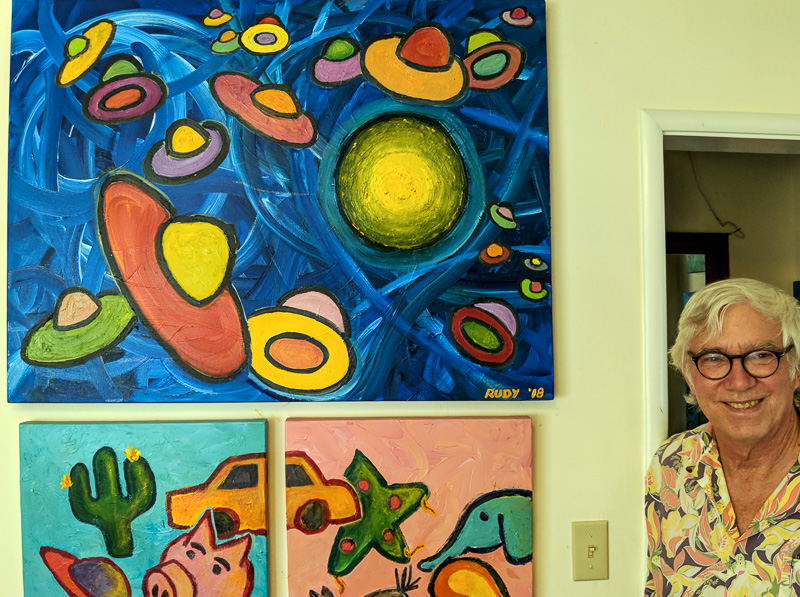
(3) Brute Matter
Using brute matter is a variant on using computer chips. But without having to build a computer.
I’d entertained the notion that Gee uses a granite river rock as his server, I’ve often talked about the quantum computations in brute matter (see my novel Hylozoic ). I like the idea of my server being a nice rock, let’s say the rounded stones from creeks and rivers, or like boulders you see sitting around in forests. (I think these are mostly granite. The solid black rocks from rivers are basalt, and the layered ones are schist.) A soul-server rock doesn’t have be all that big, as any old rock has an octillion atoms. Maybe you can even carry your server rock in your pocket.
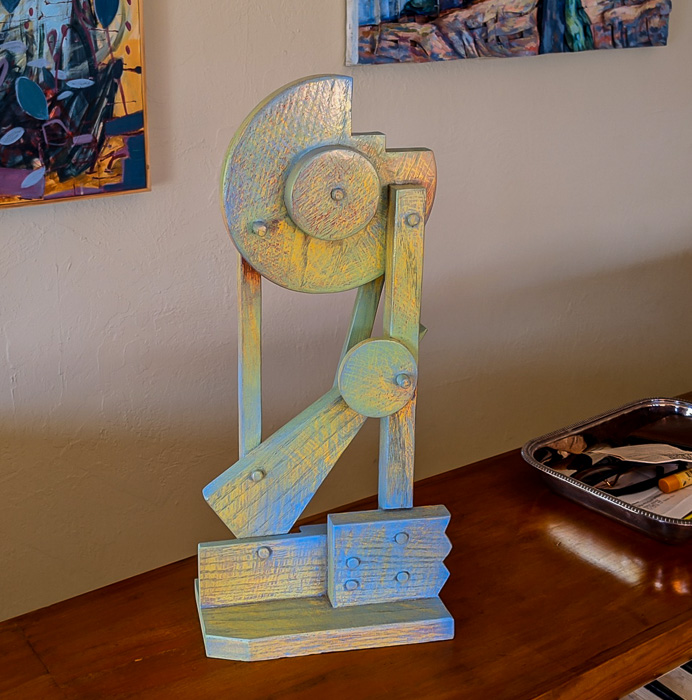
[Sculpture by Vernon Head.]
But, you know, all of a sudden server rocks seem kind of silly to me. Better to just accept that the servers can be low-level biodevices without enough oomph to make a hosted lifebox be juicy. As I say, I did the living rock thing in Hylozoic, so why do it again.
(4) Distributed Lifebox
In a less outré mode, Rudy Jr. was talking to me about distributed storage. Each of his Monkeybrains customer antennas has a few megabytes of extra storage on it. You could split up your lifebox and have the pieces hopping around on network storage devices. This could be done even if the devices were biocomputing fungus lumps. This might be another alternative that Gee might use in stead of big Skyhive-type yeast mats. Here, a hosted lifebox doesn’t have a fixed physical server location, so it’s not really possible to erase it. Distributed biocomputation.
Pushing it, think of an anthill or a disease. Like: “I am your sneeze.”

“Neptune” acrylic on canvas, November, 2019, 18” x 24”. Click for a larger version of the painting.
(5) Chaotic Processes
Very early on, I was talking about Mary’s server being a waterfall. Back when I wanted to call the story “Mary Falls.” The notion of natural processes being usable computers is in Postsingular and Hylozoic—as is the notion of computing rocks—but I think I could make something new of the computing natural processes. See the sketch in the next two paragraphs.

I was walking in the woods yesterday, and looking at a tastily chaotic bunch of wind-waved branches, and thinking about how, wherever I am, I always look around for something chaotic to, like, feed my mind. And I was thinking that it would be nice if, at some future point in the narrative, a person’s lifebox storage hops from one natural process to another. It not hosted on a yeast-mat or in a redwood tree or in a computing river stone. It hops around. The lifebox mind is like a person using stepping stones to walk across water. Always have an eye out for the next vortex of natural chaos that you can be hosted on.
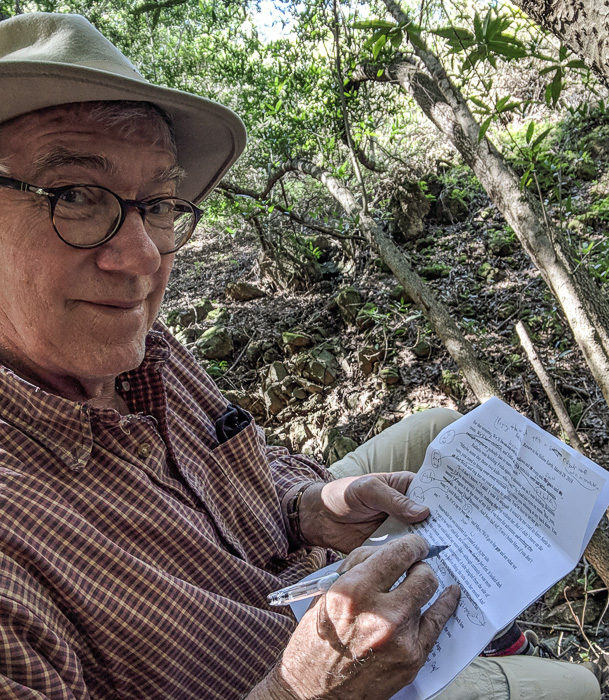
A soul like this would still need a body for doing stuff. But it would be a body whose mind lives on in the waving of the branches in the trees. That’s cool. Objective correlative: that’s my life.








